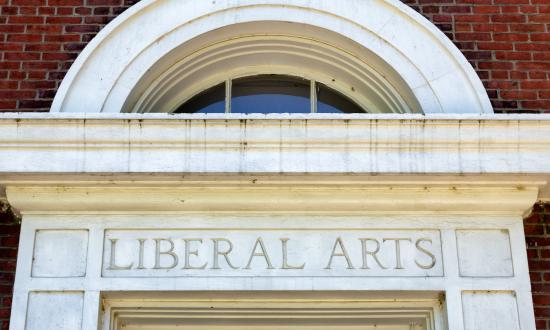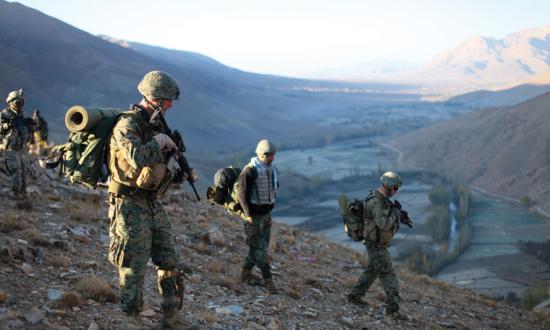The education and training of Navy officers has changed by necessity to meet the technological arms race of the 20th century, but this has led to leadership weaknesses in recent years. To meet present and future challenges, naval officer training and education should focus on a liberal arts foundation and a common curriculum of fundamental seamanship for all officers to develop leadership, navigation, and ship-handling skills, and strategic thinking.
New Technical Roles
The breakneck arms race of the Cold War, greater civilian role in military policy making, and a burgeoning military bureaucracy all drove a shift to technocratic training and education for officers following the end of World War II. Indeed, as historian Lawrence Allin has written, “dramatic changes within the Defense Department occurred in the 1960s and further diminished an officer’s value as a professional capable of advising on policy.” The introduction of a civilian-heavy power structure in the Department of Defense reduced the perceived need for officers to think on policy matters.
However, that does not mean more officers were deployed in command positions. As Allin continues, “the proliferation of officer specialties in scientific, technical, logistical, and administrative fields . . . tended . . . to make an officer more a bureaucrat than a fighting man. . . . The increase in [naval] officer strength from 1,200 [in the 1880s] to 60,000 [post-1950] was not accompanied by a like increase in fighting units.” Not only were officers sidelined from policy discussions, but a far larger percentage of the officer corps also was engaged in technical staff duties than in previous decades. This was necessary to support the Navy’s role in a vastly changed battlefield. Computers, guided missiles, and nuclear power and weapons revolutionized the naval battlespace. Officers had to keep up.
Technical Higher Education
The emphasis on technical higher education has ballooned in the officer training pipeline since the 1950s, both at the U.S. Naval Academy and in the Naval Reserve Officer Training Corps (NROTC). The Society of American Military Engineers has written, “as a solution to the growing need for officers trained in the scientific and engineering fields a modified type of NROTC unit was established at the Massachusetts Institute of Technology in 1956. . . . [A midshipman’s] undergraduate field of study must include a heavy scientific and engineering curriculum.” This marked a departure from Admiral Chester Nimitz’s liberally educated officer of the World War II era, when Nimitz had stated that “officers are well-rounded individuals, capable of meeting the diverse problems of their profession.” In 1968, the Naval Academy introduced a system of 18 different majors, encouraging midshipmen to specialize in technical fields rather than the general curriculum all students had previously studied. While more majors have since been introduced, the Navy continues to prioritize technical education. In 2009, Naval Service Training Command (NSTC) established a tiered program, requiring that “minimum 65 percent technical (i.e., Tier 1 and Tier 2) major graduates for Navy Option Scholarship midshipmen,” according to NSTC’s Regulations for Officer Development.
While programs exist for officers to study strategy and naval history, most focus on science to the exclusion of the liberal arts. As Captain Alfred Thayer Mahan warned in 1889, “It is now thought, practically, more important for a naval officer to know how to build a gun, to design a ship, to understand the strength of materials, to observe the stars through a telescope, to be wise in chemistry and electricity, than to have ingrained in him the knowledge of the laws of war, to understand the tactical handling of his weapons, to be expert in questions of naval policy, strategy, and tactics.” This is truer now than in Mahan’s day. Through this focus on design and materials, seamanship and leadership have been sidelined with disastrous effect.
Failures of Leadership
In the past decade, a combination of weak leadership and poor seamanship has wrought havoc on the U.S. fleet. Consider the USS Cowpens (CG-63), which saw three commanding officers relieved of command within four years, one of whom was relieved months after a near-collision with the Chinese aircraft carrier Liaoning. This is only one example. In 2017, following a number of collisions and groundings involving U.S. Navy ships, A Comprehensive Review of Recent Surface Force Incidents concluded that many of the incidents stemmed from “a failure by [watch officers] to take clear and decisive action to avoid collision when in extremis, [as well as] poor seamanship while anchoring, [and] leadership’s delayed response when steering into danger.”
However, failures of leadership have not been limited to navigational situations. In April 2022, three sailors on board the USS George Washington (CVN-73) committed suicide within a few weeks. These deaths all occurred in port, speaking to the inability of the ship’s officers to take care of their crew in even a routine environment.
A Liberal Arts Education
A liberal arts education provides a cultural foundation that prepares officers to be resilient, effectively lead their sailors, and contribute to naval strategy doctrine. A background in the humanities can help contextualize present challenges and make them more bearable. As Rear Admiral Samuel Eliot Morison has written, “Dante, as only a great poet could, penetrates the soul of the eternal sailor, [ . . .] and willing shipmates to share the danger and the ecstasy of rolling over the multitudinous sea ‘laden with suffering’ if you will, as nothing else, short of religion, can do.”1 This literary embrace of a higher power enforces the calling that motivates sailors through hard times.
Likewise, Odysseus teaches us about perseverance at sea: “And if some god batters me far out on the wine-blue water, I will endure it, keeping a stubborn spirit inside me, for already I have suffered much and done much hard work on the waves and in the fighting. So let this adventure follow.”2 Odysseus, like a modern sailor on deployment, has embraced his situation and is resolved to carry on with it. Themes of resiliency can be found throughout Western literature. Officers who can connect with their sailors are more likely to lead them decisively when in extremis.
Indeed, an understanding of cultural traditions can be used at the strategic level as well. As Rear Admiral Stephen B. Luce wrote, “to obtain some perception, however dim, of the future, we must study the past.”3 The Navy requires its officers to study naval history from an officially prescribed syllabus, but this largely breezes over political and social trends influencing naval affairs, as well as the doctrine of our rivals. When the Cowpens nearly collided with the Liaoning, a deeper understanding of Chinese history and risk tolerance may have helped prevent the situation from becoming an emergency. An education in history, literature, and philosophy trains the student to synthesize information, to consider different perspectives, and to thereby form one’s own arguments. This complements rather than detracts from the quantitative reasoning foundation of the sciences.
Looking Forward
A seamanship program analogous to the Marine Corps’ Basic School should be required of all naval officers, regardless of community. The Basic School trains all Marine officers to lead a rifle platoon, regardless of whether they will be called to do so later in their career. The program exists to instill officers with leadership skills and a sense of service-wide camaraderie. To match this, the Navy’s Basic Division Officer Course should be enlarged to include all new officers and be taught through a hands-on style on board small craft, such as the yard patrol craft used at the Naval Academy. By studying seamanship, navigation, and division management together, junior officers would develop the leadership skills critical in any service community, as well as a deeper preparedness for the fundamental duty of a naval officer: leading sailors at sea. Whether or not the officer goes on to the surface warfare community, he or she would be better prepared to lead sailors and work in a team, while also building naval camaraderie by sharing the same experiences with officers from other communities.
As the Navy enters a new era, it must recognize how the training and education of officers has changed over the years to match the needs of its maritime strategy, and that more changes are now due. As John Paul Jones said, “It is by no means enough that an officer of the Navy should be a capable mariner. He must be that, of course, but also a great deal more. He should be as well a gentleman of liberal education, refined manners, punctilious courtesy, and the nicest sense of personal honor.” This remains truer than ever. The Navy is an organization of ships, aircraft, and weapons, but ultimately, it is an organization of people in the service of their country.
1. Samuel E. Morison, Spring Tides (Boston, MA: Houghton Mifflin, 1965).
2. Homer, The Odyssey, trans. Robert Fagles (New York: Penguin Classics, 1997), 5.219–224.
3. RADM Stephen Luce, USN, The Writings of Stephen B. Luce, ed. John Hayes and John Hattendorf (Newport, RI: Naval War College Press, 1975).






